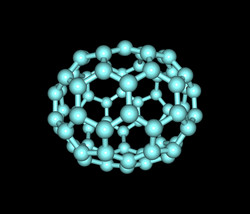Tiny particles in focus: Assessing their risks to humans and the environment
Advances in nanoscience and nanotechnology (N&N) are improving products in fields ranging from biomedicine to energy to consumer electronics. While these products improve the quality of life for millions, there are concerns about their long-term environmental health and safety (EHS) risks. EU support of the SIINN(opens in new window) (Safe implementation of innovative nanoscience and nanotechnology) project facilitated a transnational programme of joint research on the EHS of N&N to reliably and safely spur the transfer of research into industrial application. One of the biggest project successes was the development of a consolidated framework for addressing and managing N&N risks based on the careful investigation of nanotoxicity. The finalised version of the 'Consolidated Framework for EHS' was presented at the EuroNanoForum 2015 and is available from the SIINN website. To successfully develop this framework, the team identified gaps in currently fragmented research on the occurrence and toxicity of nanomaterials. These provided the basis for formulating the topics of the three SIINN joint transnational calls for proposals. Research topics covered methods for understanding and predicting the importance of intrinsic and extrinsic properties of manufactured nanomaterials (MNMs) for their interaction with surrounding matrices; models and methods for analytical tools, theoretical prediction and characterisation; exposure assessment; MNM impact on the environment; and MNM properties and effects on humans. The first call funded three projects, the second one five and the third one seven. Another important SIINN output was the newly drafted roadmaps for the safe handling of nano-objects, safe processes, safe products and safe transportation of nanoproducts. Priorities and actions regarding nanosafety were defined for the medium (2015-2020) and long terms (2020-2025). A dedicated databank was created in the International Uniform Chemical Information Database (IUCLID) system at the Joint Research Centre of the European Commission. It is used for storing relevant data from the projects and validating data from other sources. SIINN research has made a major contribution to the EHS of EU and global citizens by closing knowledge gaps on nanotoxicity and the risks associated with MNMs. Through transnational joint research, research duplication is minimised while increasing the speed and effectiveness with which relevant issues can be addressed. The reference materials and data will lead to clear and consistent standards that will be the norm in future evaluations of nano risks.







